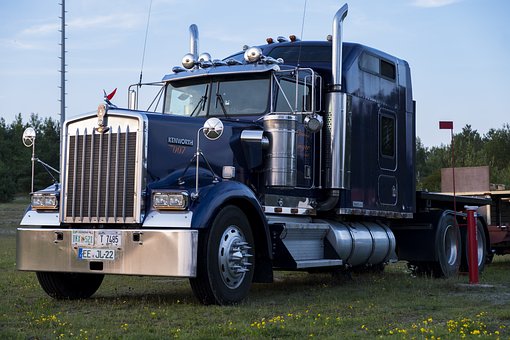 Its hard for people to identify situations involving inequalities in real life because they are not neatly laid out in the same manner as found in textbooks.
Its hard for people to identify situations involving inequalities in real life because they are not neatly laid out in the same manner as found in textbooks. Inequalities are all around us but most teachers spend time teaching students to create problems from written word problems or learning to solve problems without spending much time looking at how these problems appear in real life.
So I'm taking time to look at some everyday situations which are inequalities so perhaps we can expose our students to more problems as they look in real life, not in the text book.
1. Trucking companies are very aware of inequalities because they have to deal with weight limits set by bridges. Most bridges have an upper limit for the maximum weight of a truck, its cab, and its cargo so companies must be aware of how much cargo they can load the truck with since the weight of the cab and trailer is static.
An example might be the truck has to cross several bridges with a maximum weight of 65,000 lbs. The cab is 21,000 pounds while the trailer's empty weight is 19,000 pounds. This means the cab and trailer weigh 40,000 pounds so the truck cannot have more than 25,000 pounds of cargo. The inequality is less than or equal to 25,000 pounds.
Airplanes and trains also have to watch their weight due to fuel consumption based on number of passengers, temperature a few other things.
2. Another inequality problem is when we want to buy something like sneakers and there are several models we like but they each cost a different price. When we need to know how many hours we need to work to afford them, we look at the cost of the cheapest pair to find a minimum.
An example might be that we've found three pair of basketball shoes we love priced $140, $143, $148. We've already saved $40 towards a pair so we'll need to determine how many hours we need to work to afford the cheapest pair. This is a greater than or equal to type problem because we need to know the minimum amount we need to earn.
3. I worked a job one time where I got paid so much per hour but if I sold at least $250 worth of product each week, I would start making more per week. I received a set amount of money for each item I sold plus the base wage. I could easily determine how many items I needed to sell to reach a certain salary.
4. When you take the elevator, there is a maximum weight associated with the number of people the elevator can safely handle. This type of problem is a less than or equal to because the weight cannot be more than a certain number. In addition, they use an average weight for people to determine the maximum number the elevator can handle. This means you can have more if they all weigh less then the average or fewer if they weigh more. The next time you ride an elevator check it out.
5. Sometimes you find inequalities when dealing with the number of letters placed on a t-shirt or on a piece of jewelry. For instance, you are charged $0.10 per letter and you have a budget of $5.00, how many letters can you afford and what are some of the things you can have engraved on the jewelry?
These are just a few situations in real life which use inequalities. I like them because I relate to the situations and so do most everyone else. Let me know what you think. Have a great day.
No comments:
Post a Comment